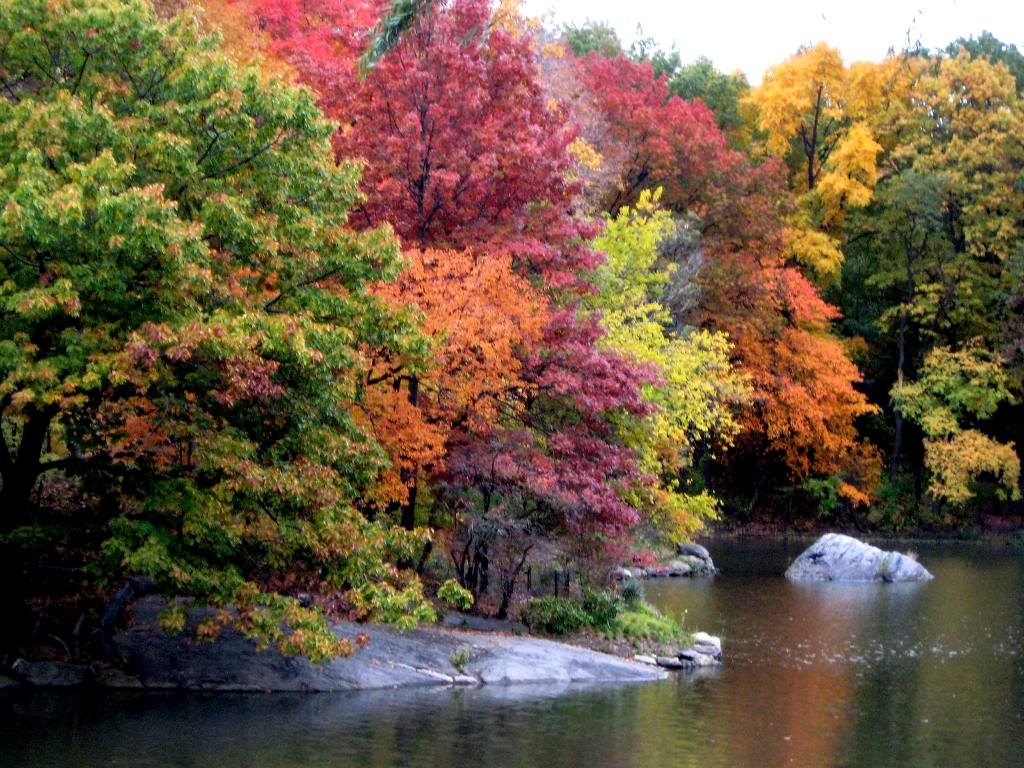Autumn Trees Biography
As the autumn leaves turn handsomely, I’ve been wondering, why do trees bother? It’s a question scientists have been asking for the past few years, and for the first time, they’ve carried out an experiment to find out.
The color of an autumn leaf can actually take a lot of work. In the fall, the green chlorophyll in a tree fades away, while the tree actively builds new pigments to turn it red or yellow. It’s generally agreed that these colors must serve some function for trees. Otherwise, natural selection would favor drab trees that dropped their leaves without such bother. They could use the energy they didn’t waste on autumn colors to fight diseases, capture more sunlight, or some other essential task.
In 2001, the late biologist William Hamilton made a provocative proposal: he argued that leaves turned colors in the fall to warn off insects. Healthy trees could produce anti-insect toxins and have energy to spare for building red and yellow pigments. The stronger the tree, the brighter the signal. As I described here, Hamilton and Sam Brown of the University of Texas found support for his hypothesis by comparing different species of trees. Species with bright leaves tend to be attacked by more species of aphids in the fall than species with drab leaves. This correlation was consistent the idea that the evolution of bright leaves was driven by feasting bugs.
As the autumn leaves turn handsomely, I’ve been wondering, why do trees bother? It’s a question scientists have been asking for the past few years, and for the first time, they’ve carried out an experiment to find out.
The color of an autumn leaf can actually take a lot of work. In the fall, the green chlorophyll in a tree fades away, while the tree actively builds new pigments to turn it red or yellow. It’s generally agreed that these colors must serve some function for trees. Otherwise, natural selection would favor drab trees that dropped their leaves without such bother. They could use the energy they didn’t waste on autumn colors to fight diseases, capture more sunlight, or some other essential task.
In 2001, the late biologist William Hamilton made a provocative proposal: he argued that leaves turned colors in the fall to warn off insects. Healthy trees could produce anti-insect toxins and have energy to spare for building red and yellow pigments. The stronger the tree, the brighter the signal. As I described here, Hamilton and Sam Brown of the University of Texas found support for his hypothesis by comparing different species of trees. Species with bright leaves tend to be attacked by more species of aphids in the fall than species with drab leaves. This correlation was consistent the idea that the evolution of bright leaves was driven by feasting bugs.
Autumn Trees
Autumn Trees
Autumn Trees
Autumn Trees
Autumn Trees
Autumn Trees
Autumn Trees
Autumn Trees
Autumn Tree's
Real Time Lapse Autumn Tree Losing Leaves In 8 Weeks








No comments:
Post a Comment